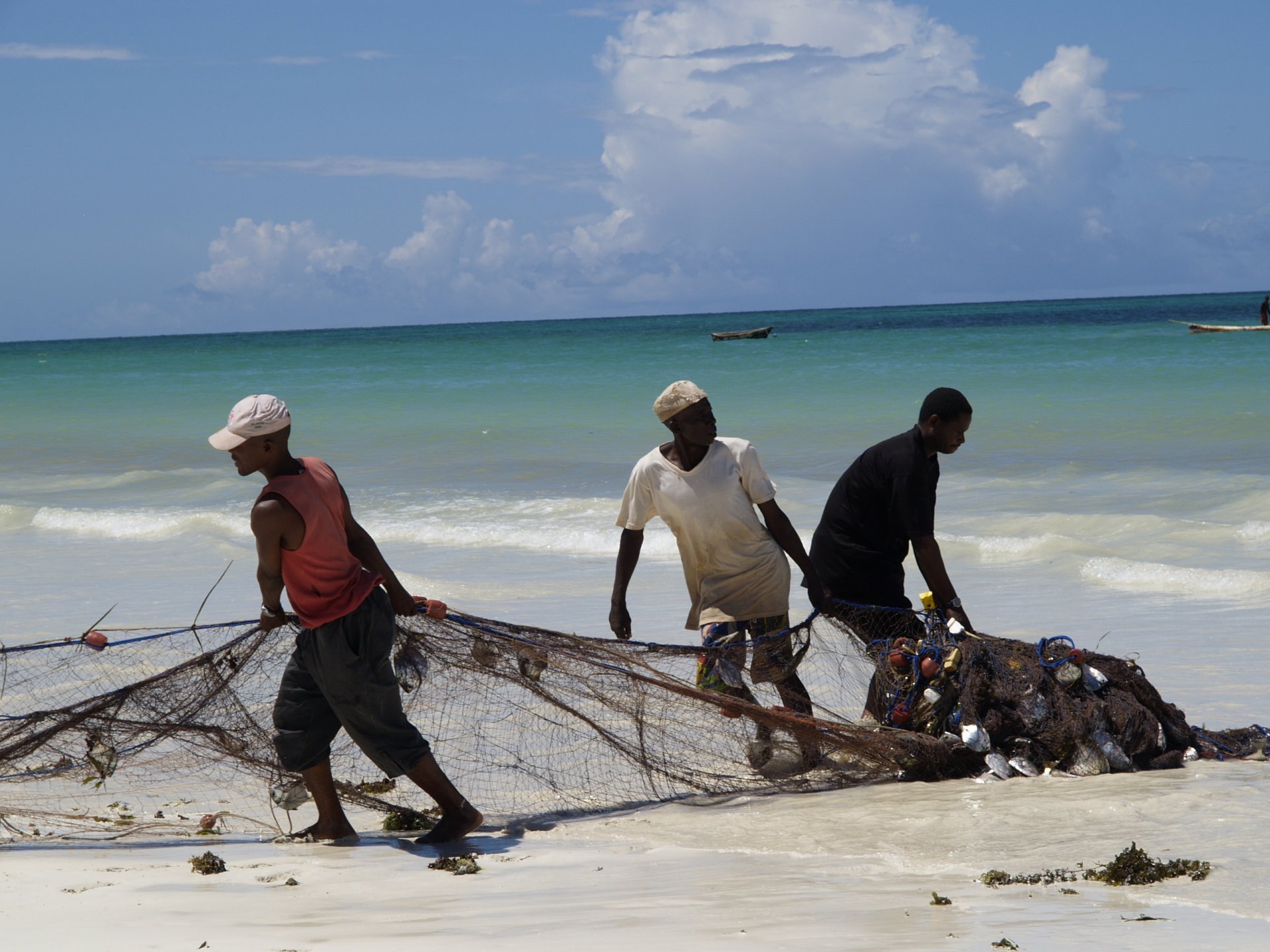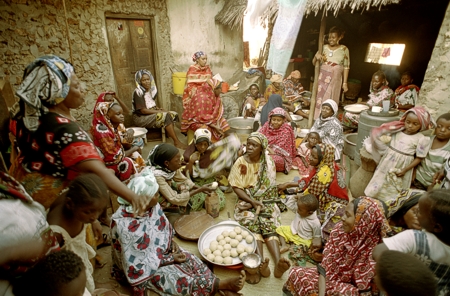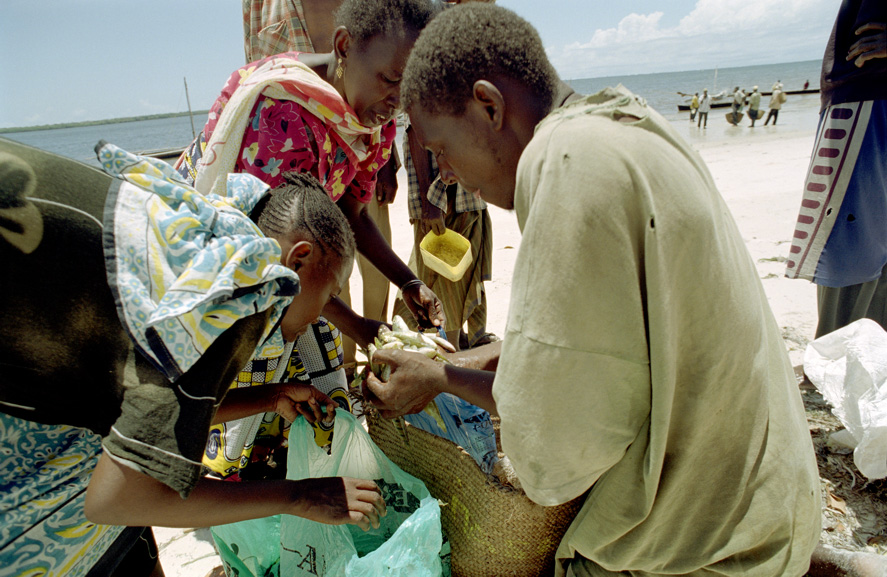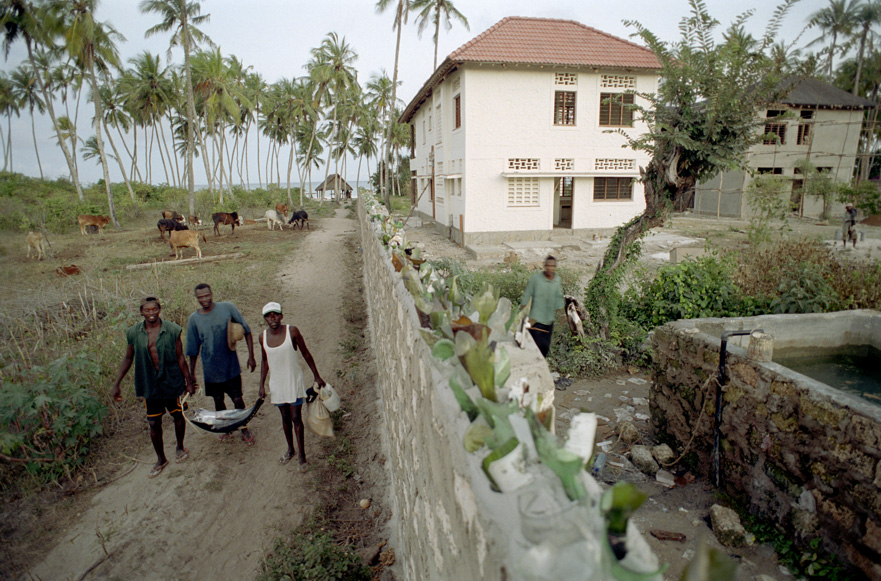- Lighthouse Foundation
- Projects
- Kenya: Artisanal Fishermen
- Project details Kenya
Project details Kenya

- Chale-Kinondo Area in brief
- The Chale-Kinondo Community
- Everyday life in Chale-Kinondo Area
Chale-Kinondo Area in brief
The Chale Kinondo is found in Kinondo location of Msabweni Division of Kwale District, Coast Province in Kenya. To the north of this region lies the river Mwachema (about 26 km south of Mombasa) and to the south is the tourist famous Chale Island. Further south this region lays the River Mkurumudzi, a further 20 km to the south. A few kilometres from the Chale-Kinondo fish-landing site is the Mombasa-Tanga road, which links Kenya to Tanzanian and runs through Ukunda town. CDA (2002) approximates the whole marine area in Diani-Chale to be about 250 hectares.
This coast is made up of rising coral reef, with low cliffs of about 15 m above sea level. The beaches here are outstanding for their stretch of white sand, the most favourable for tourism. The tropical lowland woodland and dense bush with spots of the renowned Kaya forest relicts mainly dominates further inland. To the north are well developed tourism and residential buildings, though the beach road remains untarmacked as from Neptune Resort about 6 Km from the Chale-Kinondo landing site. The southern side is largely undeveloped, though isolated developments next to the beach are rapidly picking up.
The Chale-Kinondo Community
The people living around this area are mainly the Digo, a sub-tribe of the Mijikenda. The Digo are one of the nine clans who make up the Mijikenda, the name itself meaning ‘the nine kaya’. In the late 1940s, when there was agitation among the coastal communities to form co-operative political organizations, the Mijikenda Union was born, hence giving rise to the name ‘Mijikenda’ (Pers. comm. 2001). For protection against marauding Maasai and Samburu, they preferred to live in fortified forest hilltops called ‘Kayas’ mainly along the low plateau running North-South some twelve miles inland of the Kenya coastline.
Since the 15th and 16th centuries, the Digo lived in the plains and hinterland ridges of the Kenyan coast, South of Mombassa where they built first Kaya Kwale in the hinterland and later Kaya Kinondo at the coast (Spear, 1978). Dispersing later to the coastal plains in the 17th century the Digo established other sub-kaya along the coast of Ukunda, Tiwi and Pongwe. In this region they conducted a flourishing trade with the Swahili settlements near them and established close connections with the Vumba (Swahili group) at Vanga, which they maintained into colonial period (Spear, 1978).
In the early 19th century the Vumba-Digo caravans began to pioneer long distance trade into the interior along the regional routes earlier established by the Digo. After 19th mid-century, they pushed beyond Chagga to Samburu and lake Victoria bringing back ivory and slaves. In-spite of their previous hold on most of the trade between the coast and the interior by the middle of the 19th century, the Digo lost their hold on trade to the Swahili and Arabs associated with the empire of Zanzibar (Ngweno 1995). Since then most of them have been very keen in exploitation of the coastal fishery resources. Other Mijikenda groups apart from the Digo are: Giriama, Kauma, Ribe, Kambe, Jibana, Rabai, Chonyi and Duruma.
There is a strong blend of farming and fishing. While most if not all members of this community had a claim to some small farms or attended those owned by their parents or relatives, many of them also take part in fishing activities. The younger members also look for jobs either as casuals or permanent laborers in the tourist hotels and facilities.
The older women are found within the homesteads, either attending to their grandsons and daughters, or assisting with midwifery and traditional medicine. Young women are engaged in small trading activities, with some selling attires and other tourist related wares along the beaches. In Chale-Kinondo landing site, the younger women prepare the food either at the landing site or prepare it at home and bring it to the fishermen at the landing site where they sell the food to the fishermen at affordable rates.
Everyday life in Chale-Kinondo area
The inhabitants of the community around Chale are mainly fishermen, peasant farmers or a combination of both. In this community one finds a strong case of farming of mainly maize which of late forms the bulk of many a Kenyan community staple food, vegetables of various kinds as well as several fruit trees, the most common being coconut palms and mangoes. All homesteads we have visited so far had at least a few coconut palms or at least in the vicinity, many of which are uncared for but used in one-way or the other.


